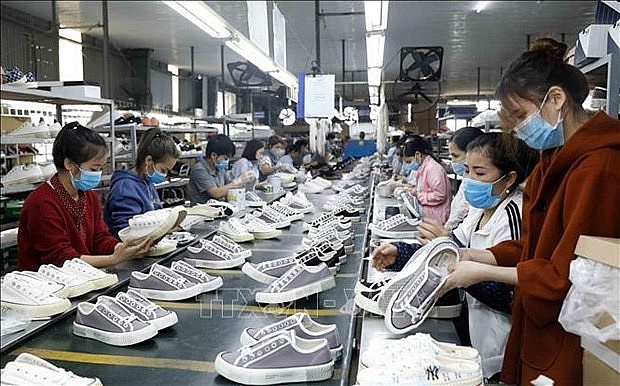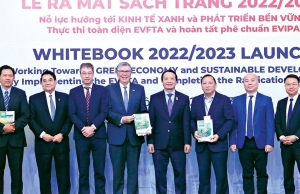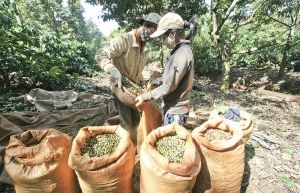Exporters urged to meet EU trade deal regulations
The General Department of Vietnam Customs (GDVC) last week reported that in the first five months of this year, the two-way trade value between the EU and Vietnam sat at $23.54 billion – down from $26.2 billion in the corresponding period last year. This includes $17.79 billion worth of exports, down by 9.7 per cent on-year.
 |
| Exporters urged to meet EU trade deal regulations. Illustrative photo (Source: VNA) |
According to the GDVC, the five-month export figure to the EU should have been bigger if exporters from Vietnam had met many strict regulations including the rules of origin (ROO) under the EU-Vietnam Free Trade Agreement (EVFTA), whose tariffs have been reduced partly since it took effect in 2020.
“Many exporters have failed to meet such regulations so their export applications to the EVFTA have been rejected and they have had to apply to ordinary export regulations,” said Nguyen Ngoc Tu, an expert from the GDVC’s Hanoi Customs Department.
The Ministry of Industry and Trade (MoIT) also stated that in 2023, the EU will remove import tariffs for thousands of Vietnamese items, but instead the bloc will apply a series of regulations that may affect non-EU items imported in to the market within the bloc.
“However, one of the greatest challenges is that exporters from Vietnam must meet ROO, a tough nut to crack,” said Kieu Nguyen Viet Ha, an expert from the MoIT’s Department of Science and Technology. “To benefit from the EVFTA’s tariff advantages, enterprises must ensure that their factories’ products must have clear origins stipulated.”
Specifically, products will benefit from the tariff preferences under the EVFTA’s ROO provided that they can prove that they are “originating”. Products are considered originating under the agreement if they are wholly obtained in Vietnam or they are products produced in the country that incorporate materials which have not been wholly obtained there, provided that such materials have undergone sufficient working or processing within Vietnam. Nevertheless, while raw materials from Vietnam and goods produced in Vietnam using Vietnamese inputs easily fall into the wholly obtained category, many goods contain materials or components imported from countries not party to the EVFTA.
These goods must prove that the inputs that have been inputted have undergone specific levels of alteration within Vietnamese borders to tap into the benefits of the EVFTA. Many goods have set procedures that must be completed within Vietnam for the good in question to be considered originating.
“For the Comprehensive and Progressive Agreement for Trans-Pacific Partnership, businesses from Vietnam will find it difficult to take advantage of tariff incentives for their garments and textiles due to tough requirements in ROO applied commonly within the bloc because almost all materials Vietnam need are imported from non-EU sources, such as China, India, and South Asia,” said Nguyen Thi Thu Trang, director of the Centre for WTO and International Trade under the Vietnam Chamber of Commerce and Industry.
Vietnam’s garment and textile exports last year reached $44 billion, including about $4 billion from the EU. Total material imports in 2022 reached as much as $6.5 billion, up 8.5 per cent on-year. About 80 per cent of clothing materials were imported from foreign markets, in which half was from China, 15 per cent from Taiwan, and only 18 per cent from South Korea.
Under the EVFTA commitments, all Vietnamese garments and textiles will enjoy a zero import tax rate seven years after the deal’s entry into force. Specifically, EU will remove import tariffs for 77.3 per cent of Vietnam’s garments and textiles after five years, and the remaining 22.7 per cent will follow suit after the next two years.
EU-Vietnam two-way trade turnover hit $54.9 billion in the first year, up 12.1 per cent on-year, and came at $61.4 billion in the second year of implementation.
According to a study by the Ministry of Planning and Investment, the EVFTA will help Vietnam’s export turnover to the EU increase by 42.7 per cent in 2025 and 44.37 per cent in 2030 compared to the situation of no agreement. At the same time, the import turnover from the EU will also climb but at a lower rate than exports, meaning 33.06 per cent in 2025 and 36.7 per cent in 2030.
The EVFTA is calculated to contribute to Vietnam’s GDP by an average 4.57-5.3 per cent in 2024-2028 and 7.07-7.72 per cent in 2029-2033.
| Main principles under the Protocol on Rules of Origin under the EVFTA Non-alteration: The protocol contains the principle of non-alteration which means that the products can transit through third countries, as long as they have not been altered, transformed or subject to operations other than preserving them in good condition or adding/affixing marks, labels, seals or any other documentation to ensure compliance with specific domestic requirements of the importing country. Documentary proof of compliance with non-alteration (certificate of non-manipulation) may be required in case of doubt. This ensures that the authorities of the importing country cannot systematically require that evidence. This will facilitate the use of regional hubs such as Singapore. Certification and self-certification: The trade agreement with Vietnam is based on the EU standard system available in other agreements. EU approved exporters can make use of self-certification. Any EU exporter may also use self-certification in case of consignments not exceeding the value of €6,000 ($6,560). EU exporters may also export goods covered by certificates EUR.1 issued by customs. In the future, the EU may move to a system of registered exporters. Vietnamese exporters will need government certificates (certificates of origin) but Vietnam can also introduce self-certification whenever it is ready to do so. Cumulation: The protocol provides for bilateral cumulation. It means, for example, that EU textile producers may supply Vietnamese garment producers with fabrics originating in the EU. The FTA provides cumulation with South Korea in relation to fabrics used for producing garments after complying with certain administrative requirements. Vietnam will also benefit from cumulation with ASEAN countries, with which the EU has an FTA in force for squid and octopus. A review clause foresees the possibility of agreeing to extended cumulation for more products and/or more countries with which both parties have an FTA in the future. This has to be requested by one of the parties and will require consensus from both sides. Source: Delegation of the European Union to Vietnam |
 | EU-Vietnam trade pact still contains vast future benefits Europe and Vietnam are looking to the EU-Vietnam Free Trade Agreement as a way to deepen bilateral trade and investment cooperation with a focus on a greener economy and more sustainable development. |
 | Rules paradox hinders plans for EU exports Though the EU-Vietnam Free Trade Agreement will remove import tariffs for many export items into the EU, costs for access to this market are set to increase in addition to strict rules of origin, making it difficult for exporters to benefit from the deal’s advantages. |
What the stars mean:
★ Poor ★ ★ Promising ★★★ Good ★★★★ Very good ★★★★★ Exceptional
Related Contents
Latest News
More News
- Businesses ramp up production as year-end orders surge (December 30, 2025 | 10:05)
- Vietjet chairwoman awarded Labour Hero title (December 29, 2025 | 13:06)
- How to unlock ESG value through green innovation (December 29, 2025 | 10:03)
- AI reshapes media and advertising industry (December 29, 2025 | 08:33)
- FPT and GELEX sign deal to develop blockchain tech for global markets (December 29, 2025 | 08:29)
- Vietnam’s GDP forecast to grow by 9 per cent in 2026 (December 29, 2025 | 08:29)
- Women entrepreneurs are key to Vietnam’s economic growth (December 29, 2025 | 08:00)
- Vietnam's top 500 value-creating enterprises announced (December 27, 2025 | 08:00)
- The PAN Group shaping a better future with ESG strategy (December 26, 2025 | 09:00)
- Masan Consumer officially lists on HSX, marking the next phase of value creation (December 25, 2025 | 13:20)

 Tag:
Tag:




















 Mobile Version
Mobile Version